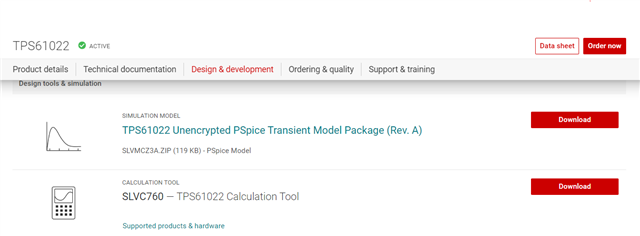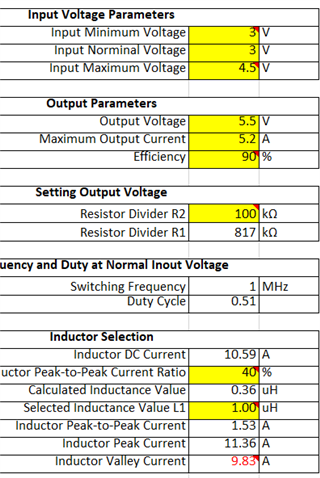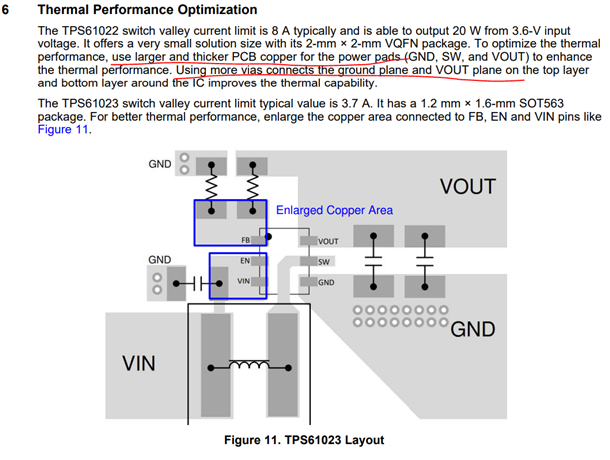Hello!
In our application we are feeding the TPS61022 from a single 18650 battery ("Nominal" 3.6V cell, but will drop as it discharges). The 61022 output voltage is set for 5.5V. Our maximum output current peaks are 5.2A.
We are planning to use the Coilcraft XAL6030-102MEC inductor referenced on page 15 of the datasheet.
Do you see any issues with utilizing the 61022 to supply this level of output current?
If so, please advise any issues or suggestions.
Related - I'm not completely clear how the valley current limit is related to the maximum output current.
Thanks and Best Regards
Jerry Molnar





